Why You Should Engage in Leadership Branding & Development
/Mastering the core skills of leadership and making them part of your professional brand can boost your career
A brand is a promise of consistency and a commitment to a particular way of doing something. It’s what is carefully created as well as what is perceived, experienced, or imagined by others.
We've seen the importance of the personal brand rise in tandem with the growth of social media and influencer culture. However, the idea of a professional “leadership brand” has been slower to take hold — though famous CEOs were early examples of the phenomenon.
If you are an employer, manager, or any-stage professional looking to shoot ahead in your career, building a positive leadership brand is a worthwhile exercise.
The importance of a leadership brand
Your leadership brand is, simply put, your reputation as a leader. It’s how people consistently perceive your personal qualities and abilities. It communicates your value. A positive leadership brand reflects well on your management style and can lead to opportunities for higher achievement, while a negative leadership brand can cause career derailment.
Being universally liked does not necessarily translate into positive leadership branding, and the reverse is also true. It’s a delicate balance: a leadership brand needs to convey just the right attributes to solidify your position as a person in control while not alienating coworkers. And everyone has unique ideas of how a “good” leader should act.
Like any other branding endeavor, a leadership brand can be carefully, consciously developed over time. Here are some suggestions to consider, from initial vision to self-promotion.
First: Know yourself and your leadership style
The way you lead others is inexorably tied to your value system. Many well-known CEOs have written about the struggle to be an effective and inspiring leader while staying true to their core beliefs.
One successful CEO, James Hackett of the office furniture company Steelcase, described detecting signs of an effective leader: “They have this sense of peace, this self-awareness, that says, ‘I understand who I am.’”
An individual typically only achieves that level of comfort and self-awareness after years of experience. And most agree that it's easier to maintain the highest levels of leadership if you embrace staying true to your values from the start.
Begin by asking yourself and some colleagues tough questions about your personal leadership style. Are you known for your ability to get things done? Are you a compassionate leader? Ask the opinions of people you trust about how you are perceived by others, even if it’s a difficult conversation.
Use the results of this assessment to create a profile of the leader you plan to be. Looking to the wide range of expert opinions on what defines a successful leader can help, but there is no "one-size-fits-all" recipe for effective leadership. Rather, play to your strengths, personal characteristics, and core values within the context of expert advice.
Next: Have a vision. Then make a plan
Once you've defined the kind of leader you want to be, imagine what that would look like. Do you see yourself as someone with genuine leadership abilities? Scientists have proven that a practical first step toward attaining goals is creative visualization. Can you imagine yourself in a position of great responsibility? What does that feel like? Where is it happening?
Back up your vision with a long-term strategy and a detailed shorter-term plan. Examine your current situation and the opportunities to assert your leadership abilities. Whether you are running an organization, managing teams, or working toward a next career step, ask yourself what results you need to succeed.
Always consider the context
While you assess your role within an organization, it’s essential to think in terms of context. What does a leader need to succeed within your specific professional environment? Some work cultures dictate a particular leadership style, and anyone departing from that will face a difficult road to acceptance.
It's essential to conduct periodic assessments of your professional progress. Look at your status within your organization and consider if you are on a leadership track. Then, decide where and how you can make a difference and what you need to do to fill in the gaps in your skillset.
If you seek a leadership role within your current organization, find constructive ways to get noticed for your skills and knowledge. Be sure to keep up with news and trends in your area of specialization — actively “upskill yourself.” If you have a specific niche, become your organization’s expert on that topic. And make sure the right people know about it — through results, not blatant self-promotion.
Being known for superior leadership qualities is a proven way for employees and managers to increase their value. Building a positive personal leadership brand will elevate your professional profile while making the organization and its reputation stronger.
Carrington Legal Search is celebrating 20 years in business: we were in the trenches with our clients during 9/11 and 2008. We partner with our clients to identify leaders and mission-critical talent to shore up and grow companies even during the most challenging times. We are here for you! To make our nationwide network work for you, get in touch at 512-627-7467 or email carrie@carringtonlegal.com.


